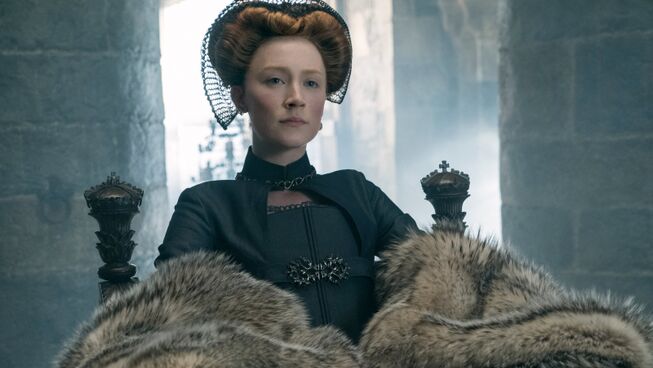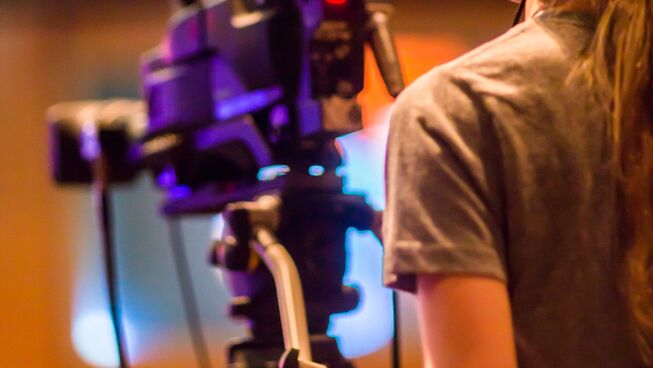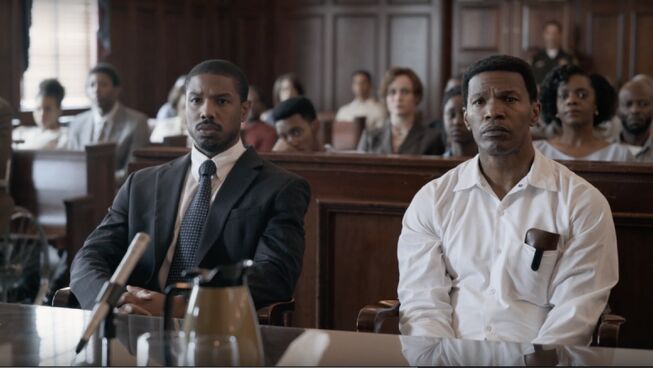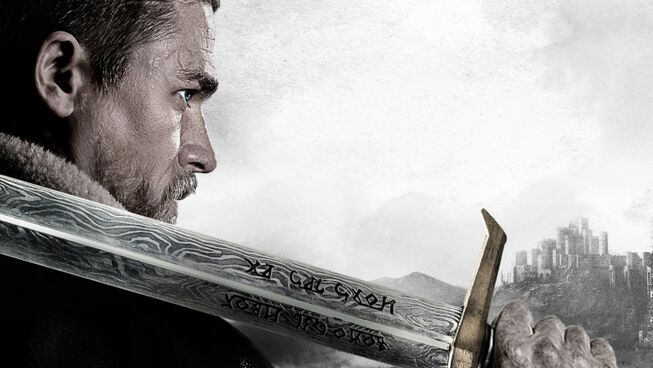
2 out of 5 stars
'Your beauty, your bravery, now I see there’s no cause for envy. Your gifts will be your downfall..' Queen Elizabeth I
Our society is dictated by how quickly we can gain information and in a few clicks or swipes, most of the information needed is available at our fingertips. The internet is full of details about every subject that has impacted mankind, including our history. The challenge is finding sources that are reliable and accurate. From modern history to the extensive aspects of mankind’s past, there can be a multitude of views on every subject. Especially when it comes to two of the most recognised names in European history, Queen Elizabeth I (Margot Robbie) and her adversary from the north, Mary, Queen of Scots (Saoirse Ronan).
This is the story of a charismatic, teenaged queen who chose to leave behind her life in France to seek the crown of Scotland and to take the throne of England. Mary had to not only overcome the challenges presented by the English opposition, but she had to combat the views of the era that were not as supportive of women in leadership, especially if they held to Catholic beliefs. Even though she had the right bloodline to prove she should be on the throne of not only Scotland, but of the seat that was held by Elizabeth. This threat was exacerbated by her willingness to bear an heir to succeed her in the future, while Elizabeth chose to not marry or bear children.
Mary falls under the spell of Henry Darnley (Joe Alwyn) and eventually marries the Scottish Lord, even with his wandering eye and affinity for alcohol. Within this tumultuous relationship, Mary does manage to give birth to a son who makes this young couple a target for Elizabeth and her court, because her child threatens the succession to the throne. The Scottish queen does manage to stop a coup to overtake her in her homeland, but this does not keep the men of her court from dividing over their loyalties to their queen and the powers to the South. Her opposition also comes from the vocal Protestant leader, John Knox (David Tennant), who was the key to raising the ire and resistance from the general populace. Despite her enthusiasm and presumed intellect, the opponents to her leadership come to a head and ultimately she has to reach out to Elizabeth for refuge. This becomes a temporary solace for the young ruler, because her time in England turns into a prison sentence that eventually leads to her actual execution.
One positive result from Mary, Queen of Scots that should make any history teacher proud is an immediate revisit of one's history lessons. This is due to the revisionist history on-screen lesson that occurs that is unlike anything taught in the classroom besides the key players and Mary’s eventual beheading. Director Josie Rourke admits in various interviews that this telling is a modern reimagining of actual historical events. Saoirse Ronan and Margot Robbie provide strong performances as the leads, but the remaining cast is left to be mere window-dressing or to represent the caricatures of these historical figures.
Even though Elizabeth goes through severe changes in the storyline due to smallpox and stress, Mary does not seem to age in the decades this story represents. Then to attempt a portrayal of modern diversity within the two royal courts and leadership made for some ridiculous visual spectacles of actual events and individuals and inevitably undermined the credibility of the storytelling. To think that there were Asians and Africans represented in the English aristocracy may be nice to consider, but does not provide much credibility to this tale of betrayal and politics.
The difficulty with the history lesson does not stop there, to include dialogue that would only be represented in today’s discussion on sexuality made this into more of a political statement than a lesson in actual history. Much less how Beau Willimon’s script vilified everyone who opposed Mary as bigoted, sexist and narrow-minded left this film as less than credible, contextually unreliable and challenging to embrace.
The advantage the first time director has in her embellished view of the past is that the story is played against the beauty and majesty of the hills of Scotland. As the viewer travels through the less than accurate retelling of John Guy’s book, Queen of Scots: The True Life of Mary Stuart, at least the audience will enjoy the scenery. Beyond the aesthetic, there is very little to celebrate or enjoy in this historical exchange between these female monarchs.
For a better depiction of this era and a much better film is 1998's Elizabeth starring Cate Blanchett.
REEL DIALOGUE: Can we trust anyone or anything?
Trust. It is a word that is essential for human relations to flourish. The challenge is to know who to trust. Throughout Mary, Queen of Scots the question comes back to knowing who to trust for wise counsel, where to place your personal faith and who to trust when things are at their worst.
This is an issue that impacts fictional tales and real life, too. It is not hard to realise that most people will fail to find the answers in this area at some point. Yet, what is known of the God of the Bible is that he is the only one that is truly trustworthy. If you are looking for someone to trust, how about picking up the Bible and finding the only truly trustworthy being in existence.
1. How will the world come to an end? (Matthew, 24:36, Revelation 20:1-15)
2. Should we rebel against bad leadership? (Romans 13:1-7, 1 Peter 2:13-17)
3. How can we know that the God of the Bible is trustworthy? (Psalms 33:4-6, Romans 1:18-20)








